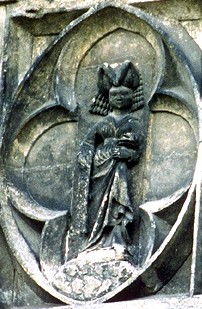
Jacques Hart
Trawler B-20/II/1 Jacques Ker. Photo Author's collection
The Polish shipbuilding industry began building fishing vessels as early as 1949, when in February the Gdansk shipyard (later named after V. Lenin) was put under the keel of the first onboard trawler B-10, which fished from the side and was equipped with a 1200 hp engine . steam engine. They were released in a record series of 89 pieces. The last fishing steamer was commissioned in 1960.
Since 1951, we have been building various types of motor units in parallel: trawlers, lugrotrawlers, freezing trawlers, processing trawlers, as well as basic processing plants. During this time we have become one of the largest manufacturers of fishing boats in the world. The fact that we have reached this position 10 years after the construction of the first Polish naval ship is one of the biggest successes of our industry. Until now, the recipients of these units were mainly the USSR and Polish companies, so it was decided to interest highly developed countries in them.
It all started in France with a broad propaganda and advertising campaign. This gave good results and contracts were soon awarded for 11 B-21 ships, which were transferred to the Gdańsk Northern Shipyard. Despite the appearance of the series, they differed significantly from each other, especially in size and equipment. This was an innovation in our shipbuilding, and was due to somewhat different customs of the local market. French fishing companies are individuals or companies, usually with a long family tradition of sea fishing. They treated each ship not only as a means of livelihood, but also as a hobby and an expression of ambition, proud of its achievements and appearance and not tolerating any failure. Therefore, each shipowner invested a lot of personal creativity in the design of the ship, had his own ideas about the whole ship or its details and really did not want to give them up. This meant that even if the trawlers were from the same series, but from different companies, they were never the same.
The successful entry into the local market with smaller boats led to the desire to repeat this with larger power units built by Stocznia im. Paris Commune in Gdynia. These were very successful B-20 trawlers produced for our country, more modern and more expensive than the B-21. Soon they were interested in two of the largest shipowners from Boulogne-sur-Mer: Pêche et Froid and Pêcheries de la Morinie. The French versions differed significantly both in equipment from our domestic ones and among themselves. The main change concerns the way the caught fish are stored. Local fishermen brought it fresh for direct consumption or to a land-based cannery because the French didn't buy it frozen. The new vessels were intended for right fishing in the North Sea, the Western and North Atlantic, and fresh products were to be transported either in bulk or in boxes in holds cooled to -4 ° C. Therefore, freezing devices that were previously in the Polish version disappeared from the trawlers, and the engine power and speed of the vessel increased.
Chief Director of the shipyard, Master of Science. Erasmus Zabello wanted the first ship to present itself as best as possible in the new local market, and personally made sure that everything on Jacques Coeur was the best it could be. And that is why the ship was made with great care, taking care not only of its good technical quality, but also of external aesthetics and residential interiors. This was also influenced by the representative of the shipowner, Eng. Pierre Dubois, who regularly checked each installed element down to the smallest detail. Between him and the builders there were also friction and quarrels, but this benefited the ship.
The design and documentation of the Jacques Coeur trawler were prepared by the shipyard's Design and Construction Bureau, incl. engineers: Franciszek Bembnowski, Ireneusz Dunst, Jan Kozlowski, Jan Sochaczewski and Jan Straszynski. The shape of the ship's hull took into account the experience of the shipowner and tests carried out in the model basin at Teddington. Construction was overseen by Lloyd's Register of Shipping and Bureau Veritas.
The hull of the trawler was steel and fully welded. Due to the high power of the drive engines, the design of the stern was specially reinforced, and the keel had a box-shaped design. The block was divided by bulkheads into 5 watertight compartments. The hull plating under and between the side trawls was thickened and steel protective strips were welded onto it.
The ship accommodated 32 crew members. The navigation deck housed the radio operator's cabin and the hospital, which previously had only much larger units. On the boat deck were the cabins of the captain, 300th, 400th and 3rd mate, and on the main deck - the 2nd, XNUMXnd, XNUMXth and XNUMXrd mechanic, two crew cabins, a galley, mess rooms for officers and crew, drying rooms, refrigerating chamber, food warehouse. and transom. The remaining crew cabins are located on the aft deck. In the bow of the trawler there were warehouses and a cabin for a worker who looked after the ship while it was in port. All rooms are equipped with artificial ventilation and water heating. Steam for the trawler in the amount of XNUMX-XNUMX kg/h and at a pressure of XNUMX kg/cmXNUMX was generated in a BX-type water tube boiler. The firing device was automatic, with an electro-hydraulic steering engine from the West German company AEG. The steering gear was actuated from the wheelhouse using a telemotor or, in case of failure, manually. An additional helmsman's post was located in the starboard wheelhouse.
On the main deck in front of the superstructure, a Belgian trawl winch Brusselle was placed with a nominal pulling force of 12,5 tons and a rope pulling speed of 1,8 m/s. The length of the trawl ropes was 2 x 2900 m. In front of the superstructure, on the main deck, there was a place for servicing the trawl winch. The novelty of this elevator was that it had dual control: electric and pneumatic. The pneumatic installation made it possible to control it both from the main deck and from the control post. Thanks to special instruments, it was also possible to take measurements of the traction of the lift and save them on a graph.
